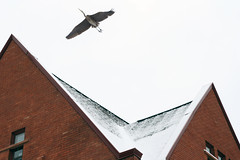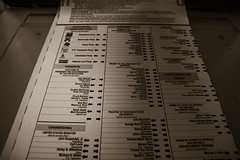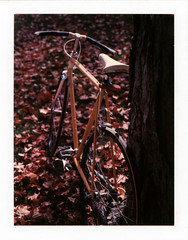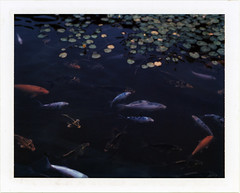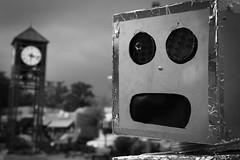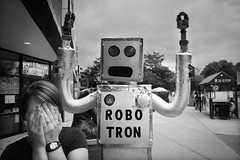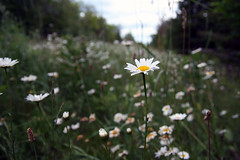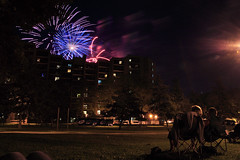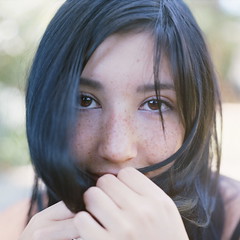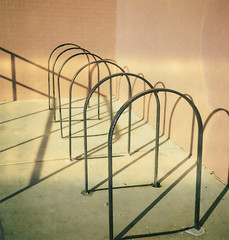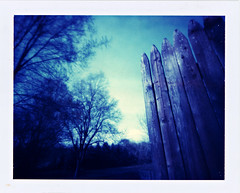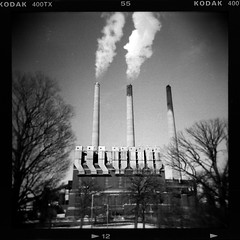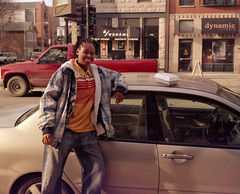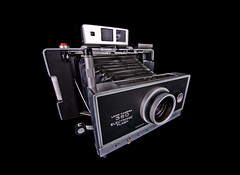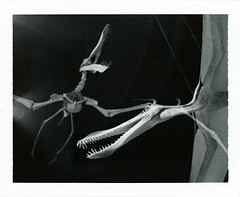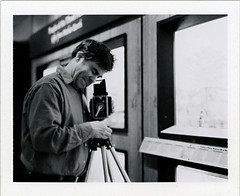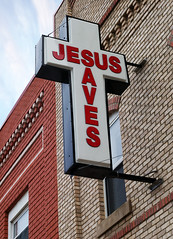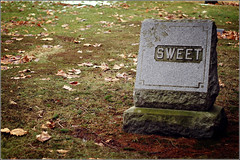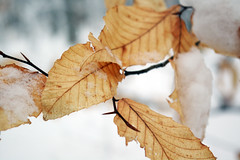Chances are pretty good that if I talked about pinholes with someone, there would be a lot of explaining on my part. It's one of those things that I forget that not everybody knows about, indeed I myself only learned about them in December of 2005. I know this because I attended a talk on pinholes given by
Matt Callow, a fellow whose passion for low-tech photography has helped inspire me. Appropriately, Matt and a few mutual friends helped found the
Crappy Camera Club not long after our first acquaintance.
Back to the real subject, we're talking about
pinhole cameras here. What is a pinhole camera? Basically it's a camera that uses a pinhole, yes a small hole, to project an image onto film. Instead of a lens, that is. I could explain how it works, but that's what
Wikipedia is much better at. Basically, just know that it works.
Now, some very interesting things happen as a result of using a pinhole instead of a lens. Expectedly, image sharpness usually degrades a bit, though perhaps not so much as you may think. Images have a tendency to vignette, especially wide-angle on larger formats like the Polaroid shown here. You can get a nice wide angle simply by building a pinhole that way. I made mine out of a jewelry box drawer.
No kidding. One of the difficulties you may run into is framing issues, and you could build yourself a viewfinder, which many people do. I'm not so inclined, and I just aim the camera at the subject, guess the framing and exposure, and hope for the best. I try not to overthink it, because pinholes are really about having fun.
Also, you introduce a longer exposure because of how little light makes its way through the pinhole. How long? Well, the photo shown here was taken at about 11 am on a mostly sunny day. I held the shutter open for 12 seconds, and the film speed was 80. That's a long time, but appropriate because the aperture of the pinhole is like, oh, f/352 or so. Obviously with an exposure that long there is gonna be movement, like the clouds and trees blowing in the wind here. Also, some films have some crazy
Reciprocity characteristics, meaning things start going badly as the exposure gets longer. Polaroid is one of the worst (or best!) films for color shifts, and that only gets more pronounced past a second or two of exposure time.
World Wide Pinhole Day happens once a year, and it's a reminder for Pinheads like me that not all great photography must be done by the greatest equipment, that sometimes all you need is some film, imagination, and a will to get out and shoot. This year it will be Sunday, April 29th.
Here is my shot from last year. If you have a pinhole camera, get out and shoot. If you don't, at least maybe you'll understand what the heck is going on when you see me out standing around for a long time with a wooden box on a tripod.




